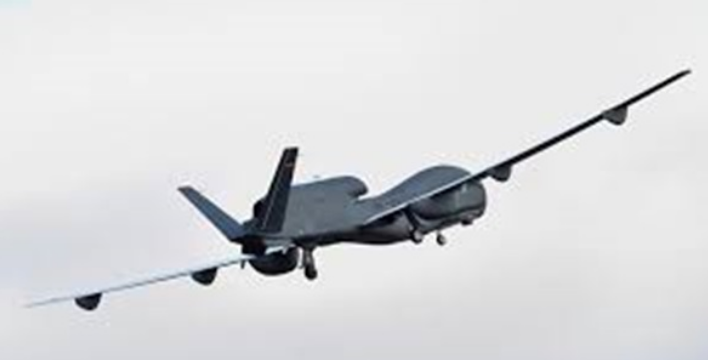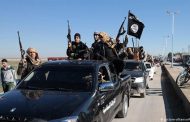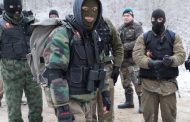Ahmed Adel
Wars are no longer highly traditional in light of the massive development of military technology. In conjunction with this development, security concerns have escalated due to some advanced weapons falling into the hands of terrorists, as is the case with drones.
Double-edged sword
Drones are a double-edged sword in terms of the possibility of using them in counterterrorism operations and other peaceful goals, while at the same time they are considered an easy tool to own and employ for terrorist organizations to carry out lightning operations in depth that are usually effective and inexpensive despite the difficulties these organizations face after the severe blows they have received.
ISIS and drones
In January 2017, ISIS launched its so-called Drones Mujahideen Unit as a new way to compensate for the loss of many of its militants since the start of the Mosul battle in October 2016.
In February 2021, the commander of US Central Command, General Kenneth McKenzie, confirmed that drones are the greatest danger to US forces in Iraq, after improvised explosive devices (IEDs) had been previously ranked first.
In December 2021, an investigative report by the BBC revealed ISIS’s ability to manufacture drones.
“An investigation found that ISIS attempted to develop high-speed drones powered by simple jet engines, such as those used in the V-1 bombs dropped on Britain during World War II,” the report said.
Iran and targeting Saudi Arabia
Iran has succeeded in developing drones and has become one of the few countries in the world that possesses the latest set of them.
The Kingdom of Saudi Arabia has had the lion’s share of drone attacks against it. The Iranian-backed Houthi militia launched a number of attacks on oil stations, airports, and air bases in the Kingdom recently. The most recent of these was a missile attack that struck Abha International Airport a few days ago, wounding 26 people of different nationalities, including children.
On September 18, 2019, the Saudi Ministry of Defense revealed during a press conference the wreckage of Iranian-made drones and cruise missiles, stressing that they serve as “undeniable evidence of Iranian aggression.” Two pumping stations for the East-West pipeline, which transports Saudi oil from oil fields in the eastern region to the port of Yanbu on the western coast, were targeted.
Reasons and repercussions
There are many reasons that prompted terrorist groups to use drones in terrorist operations, especially due to the many advantages drones offer. The companies that produced drones when they were introduced intended them for personal or commercial use. Their design was compatible with the goal of being small, low cost, and within the reach of individuals. The producing companies began to compete with each other to develop the capabilities of these aircraft while offering them at a competitive price in the market and to simplify the ways of using them so that they are suitable for ordinary individuals who have very little technological skills.
This prompted terrorist groups to rely on these drones because of the difficulty of them being detected by radars due to their small structure and low energy consumption, in addition to their ability to travel hundreds of kilometers, as well as their advanced technical capabilities and low price.
Numerous reports have indicated the increasing dependence of terrorist groups on drones to carry out their operations, whether by fully relying on them for bombings or assassinations, assisting in carrying out the operation, or at least photographing. There are many indications that Hezbollah possesses a small fleet of drones, including Ababil, Iranian Mirsad, and its own drones.
Hezbollah
Hezbollah was the first to use these unmanned planes in 2004 to fly over Israeli airspace, and starting in 2006, the militia moved to launch drones loaded with explosives with the aim of blowing up Israeli targets. In 2012, it also used drones in reconnaissance missions of Israeli nuclear reactors. Not only did Hezbollah employ drones in the context of its conflict with Israel, but it also used them during the Syrian civil war. At the end of 2014, it managed to assassinate 23 individuals opposed to the Syrian regime with drones.
On August 9, 2016, Hezbollah carried out an operation against an armed faction in the Aleppo area via drones, while the Lebanese Shiite militias, which are fighting alongside the forces of the Bashar al-Assad regime in Syria, have developed a group of aircraft that can carry explosive charges and launch them at specific targets.
On the other hand, both Hamas and the Al-Qassam Brigades also use drones, as they managed to obtain some Israeli drones, which they repaired and reused. With regard to ISIS, many reports indicate that ISIS possesses drones that it uses in reconnaissance and imaging operations, which appeared in a video broadcast by the organization showing the use of drones in one of its reconnaissance operations during the battle of the Baiji refinery.








































admin in: How the Muslim Brotherhood betrayed Saudi Arabia?
Great article with insight ...
https://www.viagrapascherfr.com/achat-sildenafil-pfizer-tarif/ in: Cross-region cooperation between anti-terrorism agencies needed
Hello there, just became aware of your blog through Google, and found ...